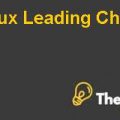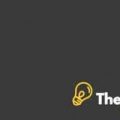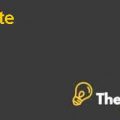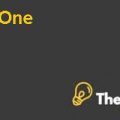Offer price for AC’s operating mill and plant
A discounted cash flow technique has been used to calculate the offer price for operating assets of RPC. It has been concluded from our analysis in Appendices 1 that the offer price that AC would be willing to pay must not exceed $438.55.
Reasonableness of assumptions
- Free cash flows are calculated for 15 years, based on the assumption that the operating assets would have an economic life of not more than 15 years.
- EBIT changes as a percentage of change in prior years.
- Book value of mill and plant ($93.7 million) is depreciated under straight-line method over 5 years.
- An assumption that the company would not invest in capital assets after 1993.
- Working capital changes as a percentage of change in EBIT over prior years.
Overall the free cash flows calculated by AC’s management seem reasonable because the cash flows are based on reasonable grounds and have considered the effect of economic change in its estimation.
Discount rate used in valuation
Weighted Average Cost of Capital (WACC) has been calculated to discount the free cash flows and our analysis in Appendices 2 suggests that the company had a WACC of 10.24%. Reasonable assumptions have been adopted to calculate WACC. Major of the assumptions are described below:
- Risk free rate has been assumed on 30 years’ Government bonds, assumed on long-term bond rating.
- Market rate has been assumed as rate on BBB rated corporate bonds.
- Market Value of equity has been calculated as average price on outstanding shares.
- Market value of debt has been calculated as debts as a percentage of MV of equity.
- Tax is assumed as an average of prior years.
Acquisition of linerboard’s operating assets
The analysts were predicting that the paper industry would face an economic downturn due to unavailability of linerboard, which could decrease the quantity of shipped goods and hence a potential decrease in operating profits of the overall industry. So in order to face the potential problem, acquisition of the operating assets of RPC seemed to be a sound strategic move which would enhance the AC’s existing capacity and provided an opportunity to substantially reduce its operating cost.
Further, the linerboard industry was likely to achieve strategic success in future. The industry was already operating under 100% capacity with a limited expansion in next year, which would increase demand at higher prices, so if the AC succeeded to acquire RPC’s operating assets then AC would not be required to purchase linerboard from market at higher prices.
Magnitude of Atlantic’s external funding
Atlantic Corporation had basically three options available to finance such strategic move. Firstly, drawing on its bank credit line was $200 million, second one was issuance of $400 million of debentures over a maturity of 25 years and the last one was issuance of $300 million of common stock.
Choosing between the alternative sources depended on the management’s attitude. If the company decided to finance the potential acquisition through debt financing, it would increase the debts to equity ratio of the company. Further, the company was suffering under BBB rating with a lowest bond rating as compared to its competitors, adopting such mode of financing would further slip the company in the BBB category. On the other hand, debt financing had an advantage of tax saving because interest expense was a deductable tax expense in calculating taxable profits.
The company could also choose to finance its acquisition through equity financing, this is an expensive mode of financing because shareholders have a residual interest in the profits of the company and the dividend was not a deductable expense in calculating profit.
Most appropriate means of financing
The interest cover ratio of the company is 3 times and the information in Exhibit 2 suggests that it had become volatile over past years. Additionally, if the debt financing is availed, it would further reduce the interest cover ratio and increase the leverage ratio of the company. Further, the company would have to suffer increased cost of debt financing which may threatened the cash flows of the company and may raise liquidity problem for the company.....................................
This is just a sample partial case solution. Please place the order on the website to order your own originally done case solution.










